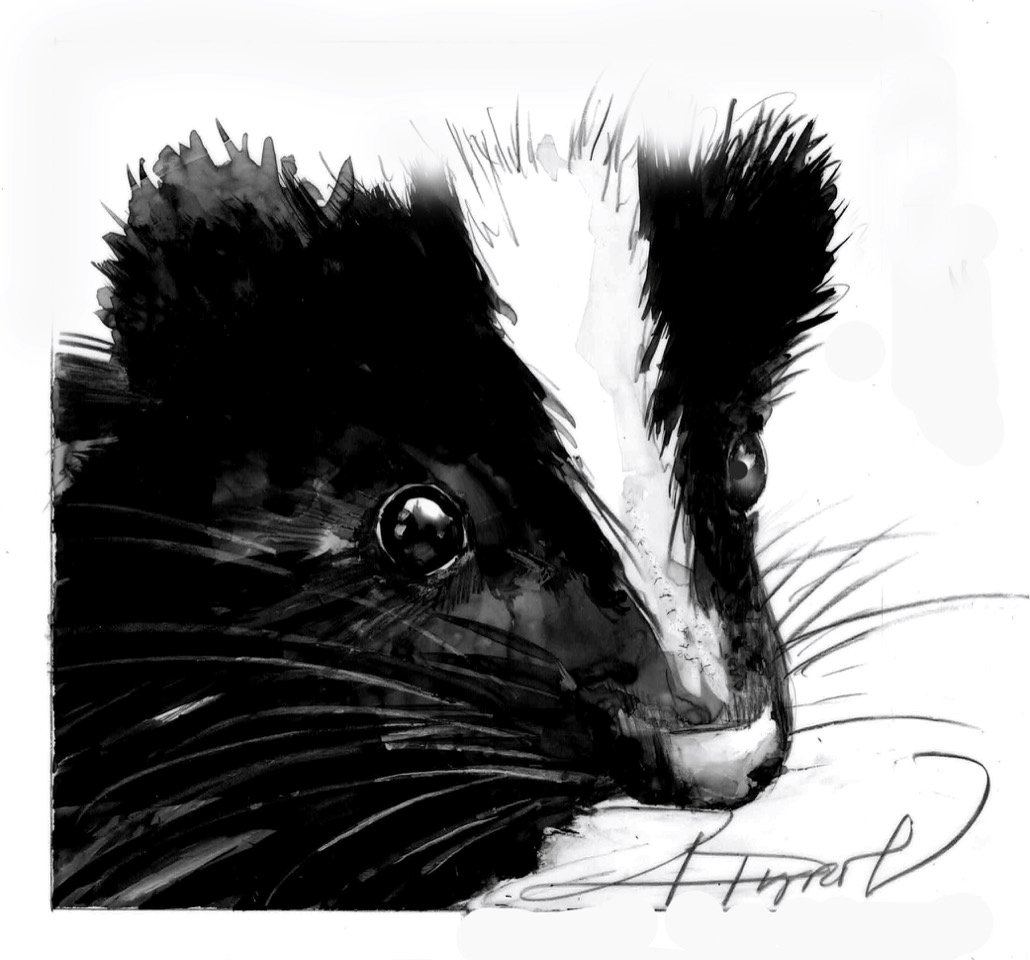Even skunks prepare for winter
November 22, 2024 | By Elise Tillinghast | The Outside Story Several weeks and many baths ago, my dog discovered a black-and-white stranger crossing our lawn. Wagging vigorously, and ignoring my frantic shouts, she ran up and offered her canine greeting: a nose-to-tail sniff. The encounter ended predictably, with the skunk waddling off into the dark, the dog staggering in circles, and me searching desperately through the cupboard for stink-dispelling supplies.
Skunks become conspicuous in autumn, including in yards and – sadly – roads. This is in large part due to dispersal, as young skunks that left their mothers at the end of summer are foraging in new home ranges. And skunks of all ages may be attracted to residential areas, as they consume as much food as they can and explore winter denning sites.
“They are trying to fatten up,” said Brehan Furfey, wildlife biologist and furbearer project leader for Vermont Fish & Wildlife. “Primarily, they’re eating insects, but they’ll eat other prey, and some plant matter…and let’s face it, we have all kinds of goodies in our yards.”
Those goodies include unsecured garbage and birdseed, as well as fallen apples and mice that move into sheds and woodpiles as the weather cools.
Lawns also appeal to skunks, because this time of year they contain a smorgasbord of easily accessible beetle larvae and other grubs. In turf, as well as other surfaces that hold impressions well, such as moss and carpets of pine needles, you may find skunk snoot holes, each about half the diameter and depth of a soda can. These are places where a skunk inserts its sensitive nose in search of prey. Other common signs of foraging are shredded rotten stumps and logs (like bears, skunks will pull apart wood to find wood-boring insects) and torn-up patches of leaf litter and soil.
Building up fat reserves is essential for skunks because they aren’t well adapted to forage in frigid temperatures or heavy snow. They will go out during thaws but during harsh winter weather, they remain in their dens and rely solely on stored calories. Females, especially, need to stock up as much fat as possible, because they have limited opportunities to gain weight before giving birth in early spring. And when a mother skunk is caring for newborns, she’s likely to endure a new stretch of foodless days.
“She probably has them in the burrow around April, and she’s not leaving them, because they’re completely blind and [helpless],” Furfey said.
Despite their presence around homes, Furfey stressed that skunks are not aggressive, will retreat from danger, and often tolerate people walking nearby without incident. The trouble comes when they get startled. “They have poor eyesight,” Furfey explained. “They don’t really see you coming.”
In addition to encouraging homeowners to minimize outside food sources, Furfey recommends blocking off potential denning sites when the skunks are not likely to be there. Sheds and porches attract skunks, she said, because they often offer more warmth and protection from predators than do natural shelters such as tree cavities, hollow logs, and underground burrows – skunks dig their own and use those of other animals such as woodchucks.
Except when the females are raising young, skunks establish multiple dens across their home ranges, Furfey said, so if you block them from entering one space, you aren’t dooming them to wander outside in the cold. By preventing access to problematic denning spaces now, you can also discourage females from raising young near your home.
Furfey gets numerous requests to trap and relocate the animals, especially in spring, when young emerge from the den and a previously tolerant homeowner discovers that “one skunk became five skunks.” She always declines these requests, as trapping and relocating any wildlife is illegal. Instead, in addition to preventative measures, when homeowners encounter skunk families, she recommends patience. “They’re going to move on,” she said. “Give it a week.”
At our house, I’m pleased to report that we haven’t had additional skunk sightings, although now before we let the dog out at night, we take a precautionary sniff and make a flashlight sweep of the yard. And if all else fails, there’s a crate with baking soda, a bottle of lemon juice, and dish soap stowed close to the bathtub.
Elise Tillinghast is the past executive director and editor of the Center for Northern Woodlands Education and is currently editor-at-large for Nature and the Environment at Brandeis University Press. The Outside Story is assigned and edited by Northern Woodlands magazine and sponsored by the Wellborn Ecology Fund of New Hampshire Charitable Foundation.

